
Installation view, James Cohan Gallery, Shanghai, 2010

Installation view, James Cohan Gallery, Shanghai, 2010
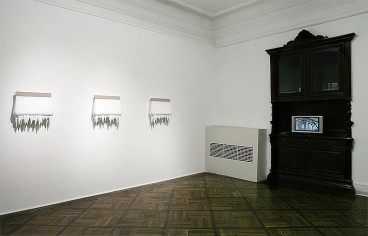
Installation view, James Cohan Gallery, Shanghai, 2010
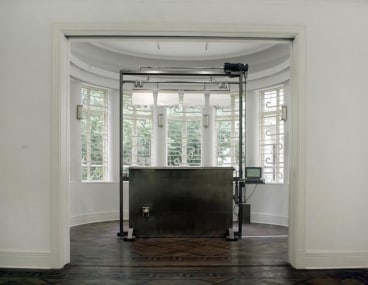
Installation view, James Cohan Gallery, Shanghai, 2010
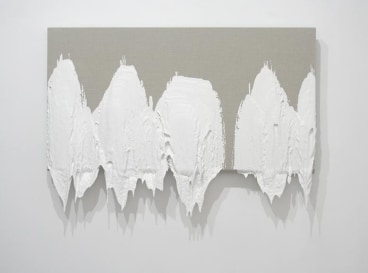
Installation view, James Cohan Gallery, Shanghai, 2010
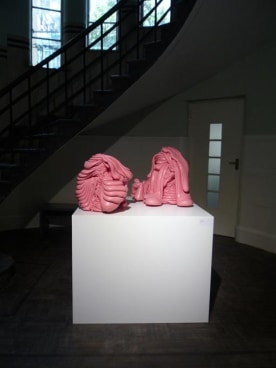
Installation view, James Cohan Gallery, Shanghai, 2010
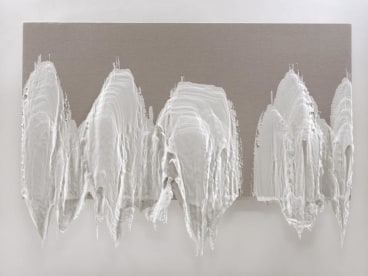
ROXY PAINE 洛克西• 潘 PMU No.36, 2009 Acrylic on linen 丙烯于亚麻布面 42 x 59 1/2 x 4 1/2 inches; 106.68 x 151.13 x 11.43 cm
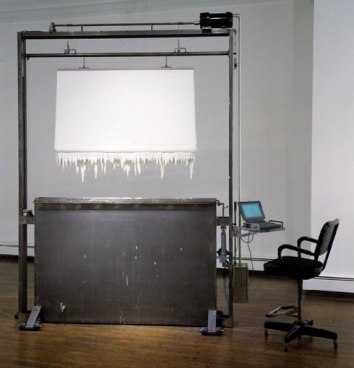
ROXY PAINE 洛克西• 潘 Paint Dipper 浸渍画者, 1997 Steel frame, dipping tank, acrylic paint, computer, interface, relays, chair 钢架、浸渍槽、丙烯、电脑、接口、继电器、椅子 124 x 99 x 24 inches; 315 x 251.5 x 61 cm
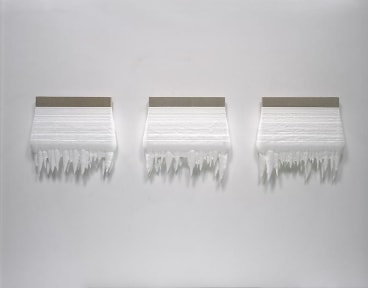
ROXY PAINE 洛克西• 潘 17441042010 A/B/C, 2010 Acrylic on linen 丙烯于亚麻布面
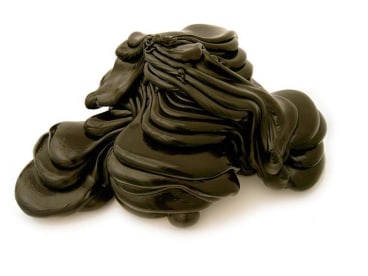
ROXY PAINE 洛克西• 潘 SCUMAK (S2-P2-DB20), 2007 Low density polyethylene 低密度聚乙烯

ROXY PAINE 洛克西• 潘 SCUMAK (S2-P2-DB23), 2008 Low density polyethylene 低密度聚乙烯
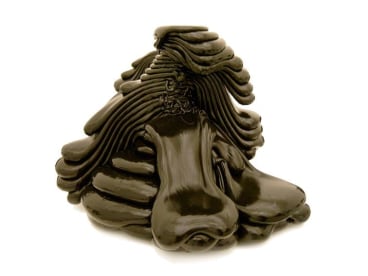
ROXY PAINE 洛克西• 潘 SCUMAK (S2-P2-DB42), 2008 Low density polyethylene 低密度聚乙烯
*Please scroll down for English.
机械制造
——洛克西•潘(Roxy Paine)个展
2010年4月24日至6月25日
开幕酒会:2010年4月24日,周六,晚6-8点
上海James Cohan画廊荣幸地推出纽约观念艺术家洛克西•潘(Roxy Paine)的首个中国个展《机械制造》。自2009年纽约大都会博物馆的个展以来,洛克西•潘的艺术创作在世界范围内备受瞩目。本次上海的展览将回顾洛克西•潘一系列具有代表性的作品,其中包括了《浸渍画者》、由自动绘画机器"PMU"创作的绘画作品、由雕塑生产机器"SCUMAK二号"生产的雕塑等。观念上,洛克西的艺术机器都源自"艺术品自动化生产"的构想,而现场的重力、时间等随机因素亦辅以决定作品最终的形态。由此,这些作品隐去了艺术家的角色,艺术机械生产不再是科幻的假设,艺术创作脱离了"艺术家之手"。
在过去十余年的创作中,洛克西•潘一直致力于探讨各种悖论——它们植根于人与自然和工业社会的内在关系之中。对应这番探索,他的作品延伸出了三条主线,一方面极度逼真地再现了自然界中的植物和菌类,另一方面他塑造了名为"树状体(Dendroids)"的大体量不锈钢树形雕塑系列,此外,洛克西也创造了"浸渍画者"、"SCUMAK"等智能艺术创作机器。在这些作品中,洛克西质疑了人类在自然界中的位置以及自然和科技间的看似泾渭分明的界限。
本次展览将首次在国内系统地展出艺术家第一件艺术机器——"浸渍画者"。 制造于1997年,这台机械驱动的绘画装置系由一台电脑编程操控,通过将空白画布反复浸渍在盛满8加仑特殊配方的丙烯颜料中完成绘画的制作。为使层层叠叠的颜料能完好地附着于画布,每副绘画都要在颜料桶中浸入、取出50至180次,画面的干燥时间也从一到五小时不等。在颜料浸渍的过程中,画布末端生成了形如钟乳石的颜料细柱。这些经由堆积而留在颜料表面的水平纹路,忠实地记录着机器操作的每一步骤,最终成了见证绘画生成过程的年轮。洛克西长久以来都着迷于千年地貌的成形。他说,通过自己的机器他得以用更快速的方式复制这一自然过程。"时间的关系被倒置了。"他陈述道,"创造出(这种类似画面底部)钟乳石形状的沉淀物往往需要好几个世纪……从这个角度来说,(机器的创造)是非常迅速的。但是,这些机器又同时指涉了自动化、大工厂的生产方式。从这个角度来说,又是极度缓慢、乏味的。我就是希望能够捕捉到介于这两者之间的一种时间的概念。"在本次展览周期内,"浸渍画者"机器将在画廊连续作业,而其近期生产的一批浸渍绘画也会同期在展厅内展出。
另一个将与观众见面的项目是一批由雕塑机器"SCUMAK二号"生产的雕塑。类似"浸渍画者","SCUMAK二号"也是由电脑编程的机械单元。就像众多流水操作系统一样,首先机器缓慢地挤出调配了颜料和聚乙烯塑料的特殊膏体,一层叠一层地堆砌出一尊雕塑。这些雕塑在传送带上逐步冷却定型,最后走下流水线。异于流水线生产追求的同一性,SCUMAK系列作品的完成充满了变数:一方面电脑编程决定了雕塑间各自不同的膏体用量、叠加层数以及冷却时间;另一方面,展览当地的大气条件、重力等非艺术家可操控的因素,也影响了作品的最终形态。因此,SCUMAK雕塑富有光泽充满流线,但又形态各异。同洛克西其他的艺术机器一样,"SCUMAK二号"延续了艺术家对于手工与大批量生产、操控与随机、自然与人工等议题的探索。
洛克西•潘1966年生于纽约,就学于新墨西哥州的圣非学院以及纽约时的普拉特学院。1990年以来,他的作品在全球范围内广泛展出,并被重要的艺术机构收藏,例如,荷兰德庞当代艺术馆、美国华盛顿赫希杭(Hirshhorn)博物馆与雕塑园、以色列的以色列博物馆、纽约现代美术馆(MoMA NY)、旧金山现代美术馆(SF MoMA)、纽约惠特尼美国艺术馆等。他具有标识性的树形雕塑在全球不少美术馆、基金会等展出,其中有西雅图奥林匹克雕塑园、瑞典的Wanas基金会、西班牙蒙泰梅迪奥当代艺术基金会、美国圣路易斯美术馆等。2009年纽约大都会美术馆展出了当年备受业界好评的《大旋流》,该作品为40x14m的巨型不锈钢树形雕塑。洛克西•潘现生活、工作于纽约布鲁克林、崔德威尔(Treadwell)。
更多信息,请联系 许宇Lxu@jamescohan.com或+86-21-54660825 x 602。
Roxy Paine: Machinations
April 24 through June 25, 2010
Opening reception: April 24, Saturday, 6 - 8 p.m.
James Cohan Gallery Shanghai is pleased to present the first solo exhibition in China by New York-based conceptual artist Roxy Paine. The exhibition will feature the artist's well-known machine work Paint Dipper (1997), paintings made by the PMU (Painting Manufacture Unit) (1999-2000) and sculptures made by SCUMAK No. 2 (Auto Sculpture Maker) (1998-2001). All of these machines are related by the automated production of artworks shaped by the random effects caused by factors of gravity and drying time.
For over the exhibitions decade, Roxy Paine has been engaged in an ambitious and ongoing body of work that continues to expose the paradoxes inherent in our relationships with the natural and industrial worlds. Paine's sculptures can take the form of startlingly realistic representations of plant life and fungi or robotic art-manufacturing machinery, as with Paint Dipper and SCUMAK, or as monumental stainless-steel tree-like sculptures, known as Dendroids, perhaps the work for which he is best known. Paine's works raise questions about our place in the natural order and the extent to which we can draw a firm line between the processes of nature and those of technology.
On view at the gallery in Shanghai will be Paint Dipper, which is among the first art-making machines created by the artist in mid 1990s. Entirely programmed and controlled by a laptop computer and motorized, this machine creates paintings by repeatedly dipping a raw canvas into a vat filled with eighty gallons of specially formulated acrylic paint. Each painting is dipped between 50 and 180 times. Drying time varies from one to five hours, allowing the paint to dry so that subsequent layers will adhere properly. The resulting "dip" is recorded on the painting's surface in sequence as a horizontal, striated line. Each painting exhibits a clear and delineated history of its own making. The drips at the bottom of each painting harden and become solid forming uneven stalactites. Paine, who has long been fascinated by the processes by which geological forms are produced over centuries and even millennia, notes that with his machines he has replicated such processes in a much accelerated form. "Temporal relationships are inverted," Paine suggests, "creating stalactite incrustations at the bottom of the paintings in a process that normally takes many millennia…so from that perspective it's very quick. But the machines are also referencing automation and factory production. And from that position, they're extremely slow and plodding. I'm hoping to capture some strange in-between notion of time." During the course of the exhibition Paint Dipper will be operating daily in the gallery while a group of recently completed dip paintings will also be on view.
Also on view are a group of sculptures produced by Paine's SCUMAK No. 2 (Auto Sculpture Maker). Like Paint Dipper, this machine is also programmed by a computer, and it slowly extrudes melted polyethylene plastic infused with pigment to create sculptural mounds, which form gradually on a conveyor belt and then are moved down the line. The sculptures are built incrementally, layer by layer. Their final form is determined by certain variables, such as the number of layers, cooling time between layers, the amount of material extruded, are programmed into the computer, while other variables include local atmospheric conditions and gravity—those conditions beyond the artist's control. The results are extremely varied, and the shapes, after they harden, retain a remarkably fluid appearance. As with all of the artist's system-based machines, Paine continues his exploration of the hand-made versus the mass produced, control versus chance, and nature versus artifice.
Roxy Paine was born in 1966 in New York and studied at both the College of Santa Fe in New Mexico and the Pratt Institute in New York. Since 1990, his work has been internationally exhibited and is included in major collections such as De Pont Museum of Contemporary Art, Tilburg, The Netherlands; Hirshhorn Museum and Sculpture Garden, Washington, D.C.; The Israel Museum, Jerusalem; Museum of Modern Art, New York, NY; San Francisco Museum of Modern Art, CA; and the Whitney Museum of American Art, New York, NY. His Dendroid sculptures can be found at various museums and foundations including the Olympic Sculpture Park, Seattle, WA; Wanas Foundation, Knislinge, Sweden; Montenmedio Arte Contemporaneo NMAC, Cadiz, Spain; and the St. Louis Museum of Art, St. Louis, MO. In 2009, The Metropolitan Museum of Art in New York exhibited Maelstrom, a 130-foot-long by 45-foot-long stainless steel sculpture that encompassed the nearly 8000-square-foot Iris and B. Gerald Cantor Roof Garden of the museum. Roxy Paine lives and works in Brooklyn and Treadwell, NY.
For Further information, please contact Leo Xu Lxu@jamescohan.com or +86- 21-54660825 x 602.